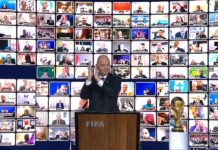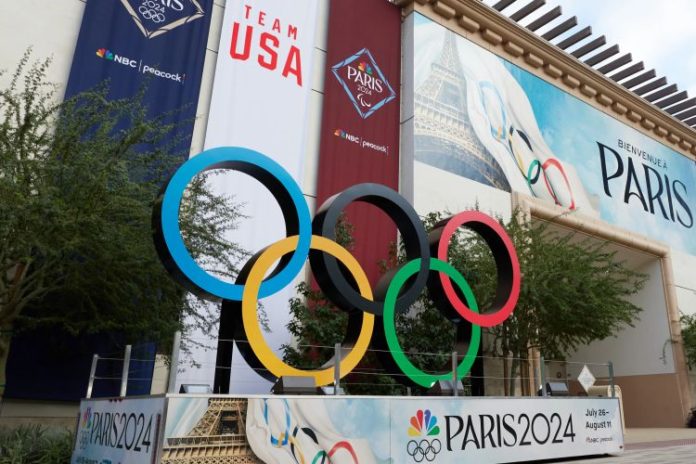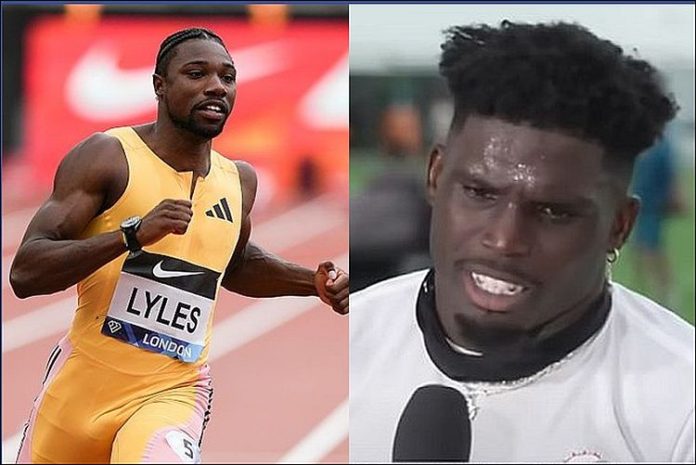★ The Sports Examiner: Chronicling the key competitive, economic and political forces shaping elite sport and the Olympic Movement.★
★ To get the daily Sports Examiner Recap by e-mail: sign up here! ★
≡ THE 2012 IOC-USOC DEAL ≡
In the aftermath of the revolutionary 1984 Olympic Games in Los Angeles, the International Olympic Committee took over television rights sales from the organizing committee and created a worldwide corporation sponsorship offer – The Olympic Program or “TOP” – which included usage rights from the IOC, the National Olympic Committees and the Olympic organizing committees.
From the start, a huge percentage of the IOC’s revenue from television rights sales and TOP came from American companies and so, amid rumblings of possible Congressional action, the IOC and the then-United States Olympic Committee agreed in 1996 on a revenue-split formula, with the USOC to receive:
● 12.75% of the U.S. television rights sales
● 20.00% of all TOP sponsorships
Over time, while the U.S. television rights continued to skyrocket in value, other countries began paying more too. And while U.S. companies like Coca-Cola continued with TOP, firms from other countries came in too.
So, the 1996 IOC-USOC deal started to cause chafing within some corners of the IOC membership, that the percentages were too rich.
The moaning got louder and louder and after the New York bid for the 2012 Games went out in the second round in 2005, and Chicago for the 2016 Games was eliminated in the first round in 2009, USOC officials felt a modified agreement was needed.
After a lengthy series of talks, a new agreement came in May 2012, modifying the deal from 2020 to 2040. The specifics have never been made public, but then-IOC Marketing Committee Chair Gerhard Heiberg (NOR) told the IOC Session that:
● USOC percentage of U.S. TV rights lowered from 12.75% to 7.0%
● USOC percentage of TOP sponsorships lowered from 20% to 10%
It is believed (but never confirmed) that the cuts also came with a “floor” of the minimum amount of revenue to the USOC during the 2021-24 quadrennial and beyond.
So, is it working?
The answer appears to be yes.
The IOC released its 2024 financial statements earlier than usual in 2025, as a part of efforts to place a bow on the close of the Thomas Bach Era, and so the payments to what is now the USOPC – “Paralympic” added in 2019 – can be compared to prior quadrennials.
The IOC’s year-by-year financial statement numbers from 2013-16, 2017-20 and 2021-24 on IOC payments to the USOC/USOPC for shares of the U.S. television rights and the worldwide TOP program:
2013 to 2016: $404.399 million paid to the USOC
[$259.463 million TV + $144.936 million TOP]
● 2013: $ 32.139 million ($0 TV + $32.139 million TOP)
● 2014: $144.101 million ($98.813 mln + $45.288 mln)
● 2015: $ 31.900 million ($0 + $31.900 mln)
● 2016: $196.259 million ($160.650 mln + $35.609 mln)
2017 to 2020: $664.554 million (+64.3%)
[$306.765 million TV + $357.789 million TOP]
● 2017: $ 91.576 million ($0 TV + $91.576 million TOP)
● 2018: $213.785 million ($124.484 mln + 89.301 mln)
● 2019: $ 88.240 million ($0 + $88.240 mln)
● 2020: $270.953 million ($182.281 mln + $88.672 mln)
(Showing the Tokyo 2020 TV rights payment as if made in 2020 instead of in 2021)
2021 to 2024: $784.923 million (+18.1%)
[$318.750 million TV + $466.173 million TOP]
● 2021: $117.211 million ($0 TV + $117.211 million TOP)
● 2022: $237.015 million ($122.400 mln + $114.615 mln)
● 2023: $109.811 million ($0 + 109.811 mln)
● 2024: $320.886 million ($196.350 mln + $124.536 mln)
(Tokyo 2020 television rights money paid in 2021 is shown in 2020)
So, while the USOPC saw revenue from the IOC increase hugely from Rio to Tokyo – thanks in significant part to a huge expansion of TOP revenue – the 64.3% run-up from 2016 to 2020 slowed dramatically to 18.1% for 2024.
The USOPC is getting more money, but so is the IOC, which – mostly – sends it elsewhere for its various programs, including support for the Court of Arbitration for Sport, the International Testing Agency and the World Anti-Doping Agency.
There were fears that the 2012 modification would hurt U.S. competitiveness, but that has not happened, at least not at Paris 2024, where the American team won a sensational 126 medals, the most ever except for Games held in the U.S.
It’s good news for the U.S., but never enough, of course. For the 2028 Games in Los Angeles, the expanded sports program means the USOPC will have to significantly add funding for baseball and softball, cricket, flag football, lacrosse and squash, and sport climbing for the Paralympic Games.
And USOPC chief executive Sarah Hirshland has said that she would like to see significant increases in the amounts paid to medal winners at the Olympic and Paralympic Games. And more has to be spent on development and training in advance of 2028.
Some added help will come from joint-venture monies from the U.S. Olympic and Paralympic Properties (USOPP), the shared marketing effort by the LA28 organizers and the USOPC. The agreement promises $476 million to the USOPC from 2021-28, with $58 million paid annually from 2022-24 and $64 million paid in 2025-26-27-28.
It all helps.
But the prior hard feelings between the IOC and the U.S. have abated, as shown by an all-time high of four U.S. members of the IOC now – Anita DeFrantz, David Haggerty, Gene Sykes and Allyson Felix – and a 2034 Winter Games awarded to Salt Lake City, Utah.
So far, so good.
¶
★ Receive our exclusive, weekday TSX Recap by e-mail by clicking here.
★ Sign up a friend to receive the TSX Recap by clicking here.
★ Please consider a donation here to keep this site going.
For our updated, 694-event International Sports Calendar for 2025 and beyond, by date and by sport, click here!























